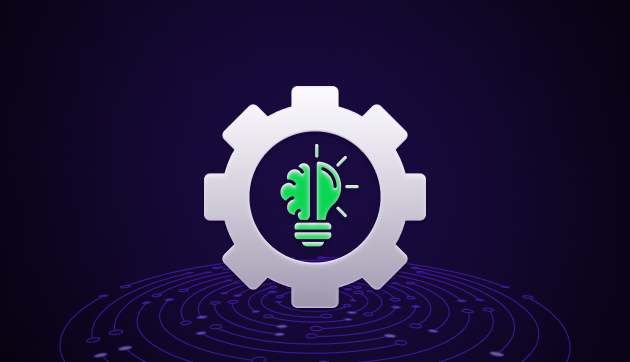
Neural Network Skills to Succeed in Data Science
Jan 18, 2025 4 Min Read 5232 Views
(Last Updated)
If you’re here, then you already understand what a huge grasp data scientists have in the tech world now and how important of a role they play for all kinds of organizations and businesses.
As per the latest reports, in 2019 the global data science market was valued at $49 billion USD, more than double its worth in 2015. And, from 2022 to 2024, the market is projected to grow at a rate of about 30% each year.
Hence this comes as no shock that data scientist salaries in India range from Rs. 4L to Rs.20L/annum with an average of Rs. 9.4L/annum according to Glassdoor.
In order to completely understand neural networks and how they help you as a data scientist, we must first dive into deep learning.
Table of contents
- Data Science and Deep Learning
- What exactly is Deep Learning?
- The Neural Networks you must know as a data scientist
- Some of the Important Neural Network Skills:
- Concluding thoughts
Data Science and Deep Learning
Data Science at its base has always been about incorporating the best-suited tools to get a particular job done. It simply means the extraction of knowledge from some data to answer a specific question.

Data science is a powerful asset that allows certain stakeholders and businesses to make informed decisions and create solutions to real-world problems using data.
It consists of collecting, storing, visualizing, processing, and modeling data so that we can draw meaningful insights and information from it. And data science makes use of several subject matters to make sense of the collected data, such as data analytics and statistics, data mining, machine learning, and deep learning.
Deep learning stands as one of the most intuitive fields in today’s artificial intelligence research, with a varied range of applications from self-driving cars to natural language processing.
As a data scientist, you may often have to gather and process vast amounts of data as well as perform certain predictive analytics on the same. And to make tasks like these easy, skills such as deep learning and neural networks become necessary to withhold.
The supremacy of ‘Deep learning’ lies in its incredible ability to accurately train big data, making it an essential skill for data scientists.
Hence, it is necessary for data scientists to understand deep learning techniques such as neural networks and use them, especially when working with massive amounts of data.
Before moving forward, make sure you understand the basics of Artificial Intelligence & Machine Learning, including algorithms, data analysis, and model training. If you want to learn more, join GUVI’s AI & Machine Learning Courses with job placement assistance. You’ll discover important tools like TensorFlow, PyTorch, scikit-learn, and others. Plus, you’ll work on real projects to gain practical experience and improve your skills in this fast-growing field.
What exactly is Deep Learning?
Deep learning can be termed as an advancement to the more traditional ‘machine learning’, wherein artificial intelligence technologies handle big data.
Artificial neural networks run a set of algorithms that assist machines in learning to perform tasks that would usually require human intelligence to operate.

The human brain is trained to function adequately and smartly evolve to encounter different situations by the repetition of tasks and procedures.
Deep learning works similarly, wherein a deep learning algorithm is set to perform a particular task repeatedly so that it can learn the problem and improve the result.
With cascading advancements in the fields of AI, deep learning is taking over machine learning in every sector, and its increase in popularity is indisputable.
Now that you understand what Deep learning is, let us dive into Neural Networks.
The Neural Networks you must know as a data scientist
Neural networks can be defined as rugged deep learning models that are capable of synthesizing huge amounts of data in merely a few seconds.
Neural networks (or NNs) have been inspired by biological neural networks. And whilst the principles are the same, the processes and the structures are very different.
In Neural Networks, the input is made to pass through an activation function along with weighted edges and the generated output may be passed through another activation function.
Most of these activation functions are stacked up, and each of them is called a layer. Besides the input and output layers, there are multiple layers in the interiors of a neural network that are known as hidden layers.
Now, there are many different types of neural networks that make a lot of everyday tasks simpler from recommending songs or movies to buying groceries online. Let’s take a look at what will help you as a data scientist.
Some of the Important Neural Network Skills:
1. Perceptron
Perceptron is a very simple neural network structure. This neural network model is also known as a single-layer neural network and consists of only two layers:
- The Input Layer
- The Output Layer

Perceptron has no hidden layers. It takes an input and then calculates the weighted input for each node. And this weighted input is passed through the activation function in order to generate an output.
Applications in data science:
Perceptrons are generally used in linear and binary model classification. They are also crucial in the formation of multilayer perceptrons.
2. Multi-layer Perceptron
Multilayer perceptrons (or MLPs), also known as feedforward neural networks, are fully connected networks. Specifically, each neuron in any one layer is connected to all of the neurons in adjacent layers.

As a result, an MLP has higher processing power when compared to a perceptron. Nonetheless, this ‘full connectedness’ makes them evidently prone to overfitting data.
Applications in data science:
MLPs are commonly used in data prediction systems, data compression for social networks, speech recognition and hand-written character recognition systems, and computer vision applications.
3. Convolutional Neural Networks
Convolutional neural networks (CNNs) are one of the most important types of neural networks in computer vision, having been inspired by the visual cortex of the eyes, they are mainly used for visual tasks such as object detection.

What sets a CNN apart from other neural networks, is its convolution layer. This layer performs the dot product, which is a component-wise multiplication followed by addition.
During the initial phases of a CNN, the filters are completely randomized and do not impart any useful results. With the use of a loss function, the filters are adjusted and after a set of multiple iterations, the network starts to improve and achieve its task.
Applications in data science:
CNN’s are widely used for tasks pertaining to the processing of pixel data and in the field of computer vision. Some of the applications include object recognition, detection of tumors in medical diagnosis, facial recognition, face detection, and handwritten letter recognition.
4. Recurrent Neural Networks
When we read a book, we can only understand it in connection with all of its chapters as a whole and not just on the basis of a single chapter. Likewise, similar to natural neural networks, machine learning models also need to understand a particular text by making use of the already-learned text.

Traditionally, this is not possible as we cannot store a model’s previous stages. Nevertheless, Recurrent Neural Networks (or RNNs) are capable of doing this, making them crucial in the case of applications that function on past data.
RNNs are designed to interpret sequential or temporal information. They use the other existing data points in a particular sequence to improve their predictions.
This is carried out by taking input and reusing the activations from the previous nodes or later nodes in the current sequence in order to influence the output.
Applications in data science:
RNNs are highly used in connected-sequence applications such as time series forecasting, predicting stock market fluctuations, signal processing, handwritten character recognition, music generation, and image captioning.
5. Long Short-Term Memory Networks
With RNNs, only the information from the most recent stages can be retained. But with language translation, much more retention is needed and this is where LSTM networks shine.

In order to learn long-term dependencies, we must equip our neural network with memorization power and LSTMs are a special case of RNNs capable of doing that.
LSTMs have a similar chain-like structure as RNNs, but the repeating module structure is different. This structure helps the network to retain a much larger amount of the previous stage values.
Applications in data science:
LSTM networks are very powerful when it comes to language translation systems, but they have more prominent applications in data science that include sequence-to-sequence modeling tasks such as anomaly detection, text summarization, video classification, and speech recognition.
Begin your Artificial Intelligence & Machine Learning journey with GUVI’s Artificial Intelligence & Machine Learning Courses. Learn essential technologies like matplotlib, pandas, SQL, NLP, and deep learning while working on real-world projects.
Concluding thoughts
This blog is a basic guide to neural network concepts, whilst the domain is vast and rapidly evolving. As we gear up for new trends in technology and more data problems to solve in the new year, it is essential to have a strong foundation.
Build a strong foundation in Data Science and bag that dream job with Zen-Class Career Program Now!
As a data scientist, leveraging neural networks to solve big data problems is very beneficial for your career and will land you roles in top tech companies. Some of the huge advantages include:
- Efficient and high-quality results
- Works without feature engineering
- Ability to work perfectly with unstructured data
- Doesn’t need labeled data.
Deep Learning algorithms are a new technology and they completely adhere to commands with detailed training. Neural networks with their ability to learn and work quickly, allow data scientists to easily undertake big problems and solve them efficiently with time to spare.





















![10 Unique Keras Project Ideas [With Source Code] 9 Keras Project Ideas](https://www.guvi.in/blog/wp-content/uploads/2024/10/Feature-Image.png)

![What is Object Detection? A Beginner’s Guide [2025] 11 object detection](https://www.guvi.in/blog/wp-content/uploads/2025/06/object-detection-2.webp)
![What is the Minerva Deep Learning Model? An Exclusive Beginner’s Guide [2025] 12 minerva](https://www.guvi.in/blog/wp-content/uploads/2025/07/minerva-1.webp)






Did you enjoy this article?